10 Best: Audio Interfaces For Home Studios 2024
We look at ten of the best home audio interfaces across a range of price points, with portable units and extensively connectable rack-mounted options featuring.
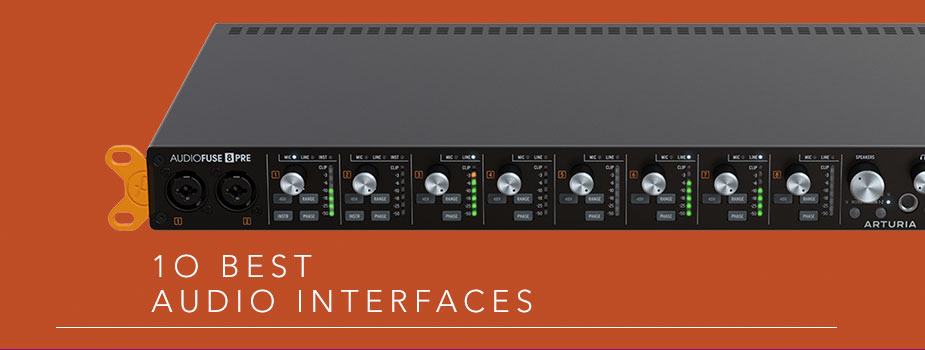
On a basic level, audio interfaces feel like quite simple bits of kit: they get sound into your computer and back out, allowing you to hook studio monitors up to your DAW and record signals from hardware like synths, drum machines and microphones. That being said, there are big differences in features and sound quality from different interfaces.
Generally speaking, more expensive interfaces offer better sound quality, more inputs and outputs and/or additional features like monitoring controls, built-in compressors and even digital effects. But at every price point there are lots of options, designed to suit different approaches to making music. Here we’ve picked out our favourites to suit a range of budgets.
Contents
What to look for
The basics
In basic terms, audio interfaces are just a way to get audio signals into your computer and back out. The most basic models offer just a couple of channels in and out, allowing you to record one or two instrument/microphone signals (or a stereo instrument), then play your projects back via a pair of studio monitors (and almost always headphones too). As you get more advanced, you can get
What really separates the cheaper interfaces from more expensive models isn’t just channel count, but sound quality: increased clarity, lower noise levels, lower distortion, more neutral sound and higher accuracy. Pro studios spend thousands searching for ultimate fidelity, but even the basic entry-level interfaces are very good these days, meaning you can achieve good quality recordings at home.
Monitor control, MIDI and other features
On top of their audio features, some interfaces offer added extras. A lot of interfaces include basic monitor controls to allow you to adjust the sound coming from your monitors. In some cases that’s as simple as a big volume knob on the interface, but you might also find handy controls for things like muting the sound completely or collapsing the stereo signal to mono in order to check compatibility of your mix.
Many interfaces will offer MIDI connections, allowing you to control hardware instruments such as synths and drum machines from your computer. It’s becoming increasingly common to find interfaces with built-in DSP (digital signal processing) for effects, allowing you to take the strain off your computer’s CPU.
Bundled software
The majority of interfaces on the market come bundled with audio software to get you started. Typically you’ll find a basic DAW (digital audio workstation) package plus some sound content. If you’re already an established producer or recording engineer then these may not be the main selling point, but it’s still worth checking out what’s included as there are often some worthwhile samples or virtual instruments included. Podcasters can also benefit from the same recording software.
The best audio interfaces
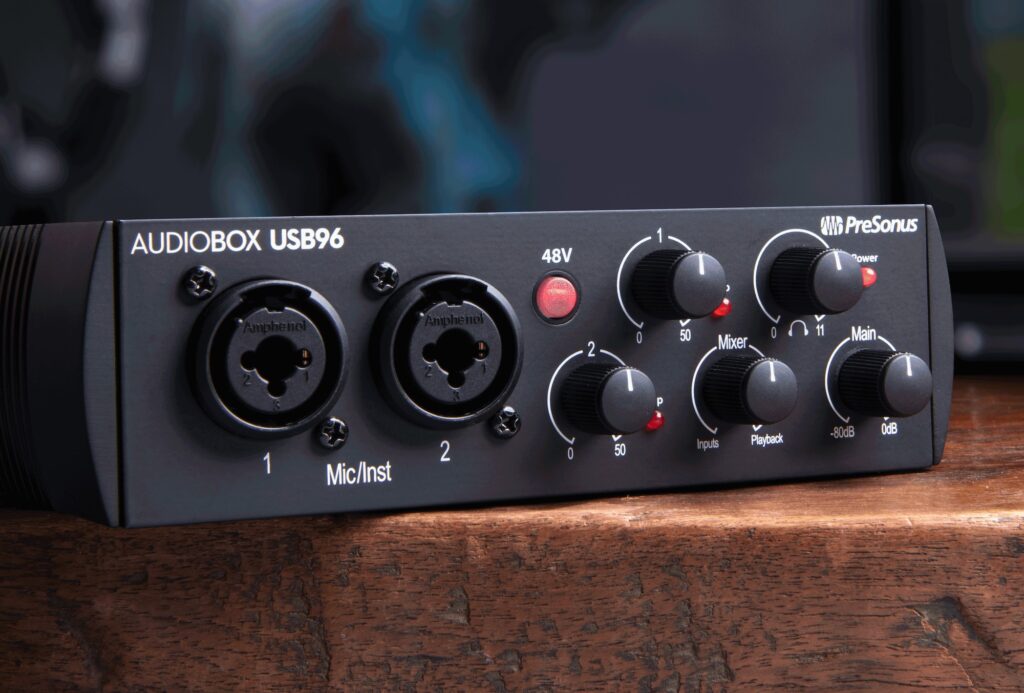
Louisiana brand PreSonus offer a range of products from mixers to speakers and even a DAW. Their interface range extends from cheap-and-cheerful all the way through to big-budget pro options. The AudioBox is closer to the bottom end of the range, but it’s got solid sound quality and the same two-in/two-out setup found on a lot of interfaces.
Although the number of audio inputs and output is broadly similar to some slightly cheaper interfaces, a big advantage of the AudioBox is that it includes MIDI in and out over five-pin DIN sockets. A lot of modern studio gear uses MIDI over a USB connection direct to your computer, there are still quite a few benefits to traditional MIDI cables, not least the fact that it’s the standard for older gear. If you need to connect hardware synths, samplers and drum machines, the AudioBox is a solid pick. The 25th anniversary version benefits from a stylish black finish.
More info/Buy| Tech specs | |
|---|---|
| Analogue ins/outs | 2-in/2-out |
| Features | MIDI in/out; rack-mountable |
| Dimensions | 140 x 140 x 45 mm |
| Weight | 2.3 kg |
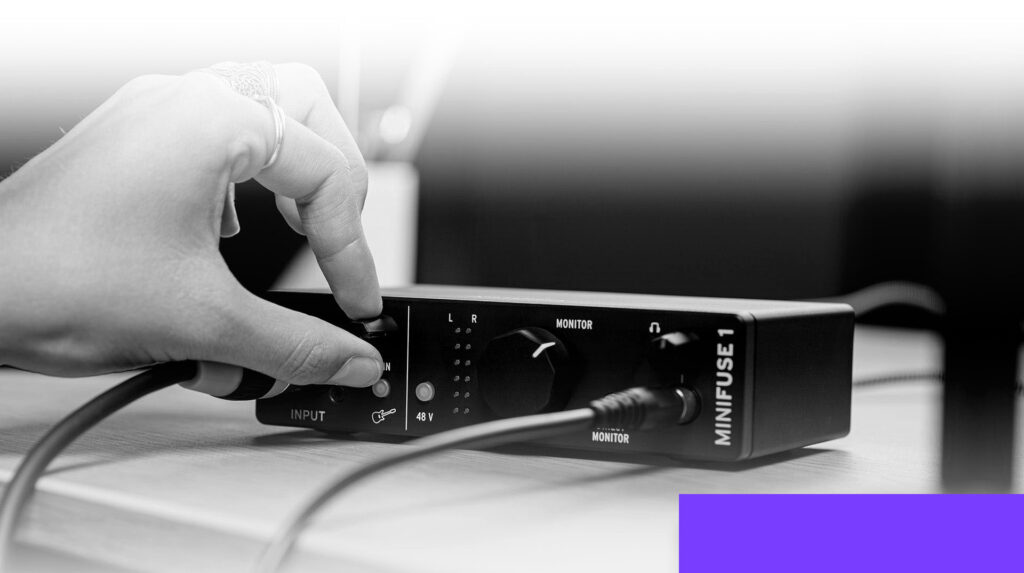
Arturia’s AudioFuse interfaces are some of our favourites, but they cater to a professional market and don’t come cheap. The MiniFuse interface range brings a taste of that quality to slightly more humble price points, with the entry-level MiniFuse 1 being the most basic and affordable of all. It’s a very simple 1-in/2-out interface featuring a versatile combo jack input suitable for most microphones, instruments and line level signals, stereo outputs for your monitors, USB connectivity and separate volume controls for the main outputs and headphone output.
The MiniFuse 1 might be basic, but it does those basics very well. It also comes bundled with a decent selection of software to get you started making music, including Ableton Live Lite and some of Arturia’s own instruments and effects. They may not be as fancy as the AudioFuse interfaces, but the MiniFuse range proves that Arturia can do entry-level models just as well.
| Tech specs | |
|---|---|
| Analogue ins/outs | 1-in/2-out |
| Features | Volume control; USB hub |
| Dimensions | 150 x 99 x 41 mm |
| Weight | 0.4 kg |
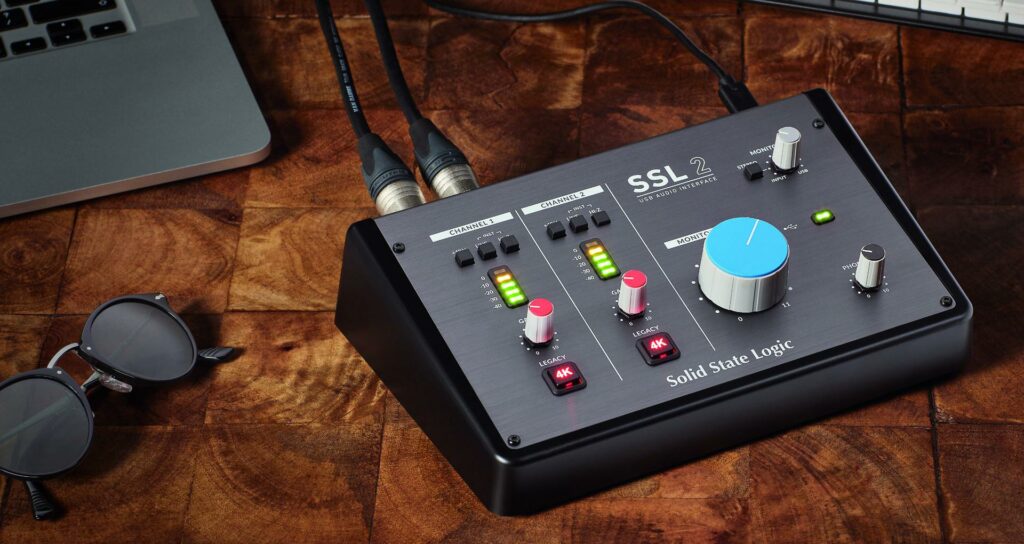
Solid State Logic is a brand best known for hugely expensive recording consoles and exotic outboard processors, which meant we immediately sat up and took notice when the Oxford-based company announced affordable entry-level audio interfaces in the form of the SSL2 and SSL2+ (very similar but with a few added features such as more outputs, MIDI I/O and dual headphone mixes). The SSL2 doesn’t disappoint, offering a simple but high quality 2-in/2-out interface
There’s something inspiring about the look of the SSL2 alone, which mimics the brand’s legendary studio consoles. It’s not just a case of looks, though, as the SSL2 offers a clarity of sound which you’d expect from SSL but also a unique feature in the form of a Legacy 4K button offering ‘analogue enhancement’ based on the sound of the classic 4000 series desks. Engage the 4K mode with the simple push button on the front panel and the interface adds analogue effects to your signal, boosting high frequencies and introducing subtle harmonic distortion. It’s a genius approach to adding character and colour from the very start of your recording process.
| Tech specs | |
|---|---|
| Analogue ins/outs | 2-in/2-out |
| Features | SSL-designed pre-amps; Legacy 4K analogue enhancement |
| Dimensions | 234 x 157 x 70 mm |
| Weight | 880 g |
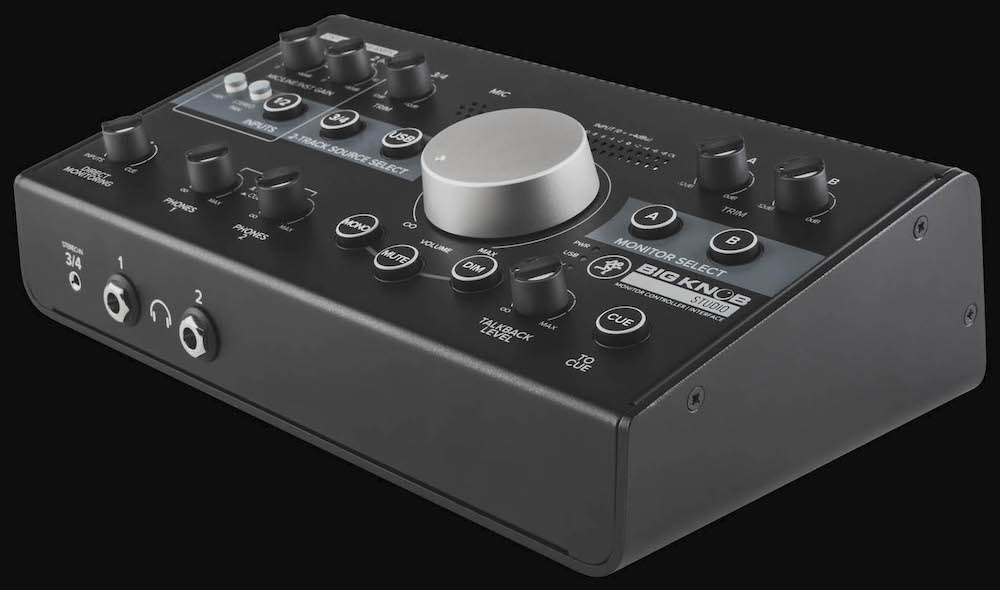
An interesting trend in recent years has been the way manufacturers have cottoned on to the benefits of adding more and more features to interfaces. Some of our other picks shoehorn effects and compressors into the basic audio interface format, but Mackie are coming at things from the opposite direction. The brand’s unfortunately named Big Knob series has been on the market for around 15 years, initially as a simple monitor controller (allowing you to adjust levels, switch between different speakers and listen in mono), but now expanded into the format shown here.
The Big Knob Studio is a USB interface with a monitor controller built in (or vice versa, depending on how you look at it). That means two mic/line inputs, two more line-only, with outputs for two pairs of monitors plus an additional pair of line outs. The monitor control aspect is something that’s often overlooked in home studios, with many of us just controlling the overall listening level via our DAW or the monitors themselves. Even if most home studio users are unlikely to need some of the more advanced options like talkback, many home producers would benefit hugely from the ability to control levels, switch between two pairs of monitors, mute the output, sum to mono and more. It’s a really effective approach, with a nice balance between connectivity and monitoring.
More info/Buy| Tech specs | |
|---|---|
| Analogue ins/outs | 2-in/4-out |
| Features | Monitor controller; talkback |
| Dimensions | 251 x 163 x 81 mm |
| Weight | 1.6 kg |
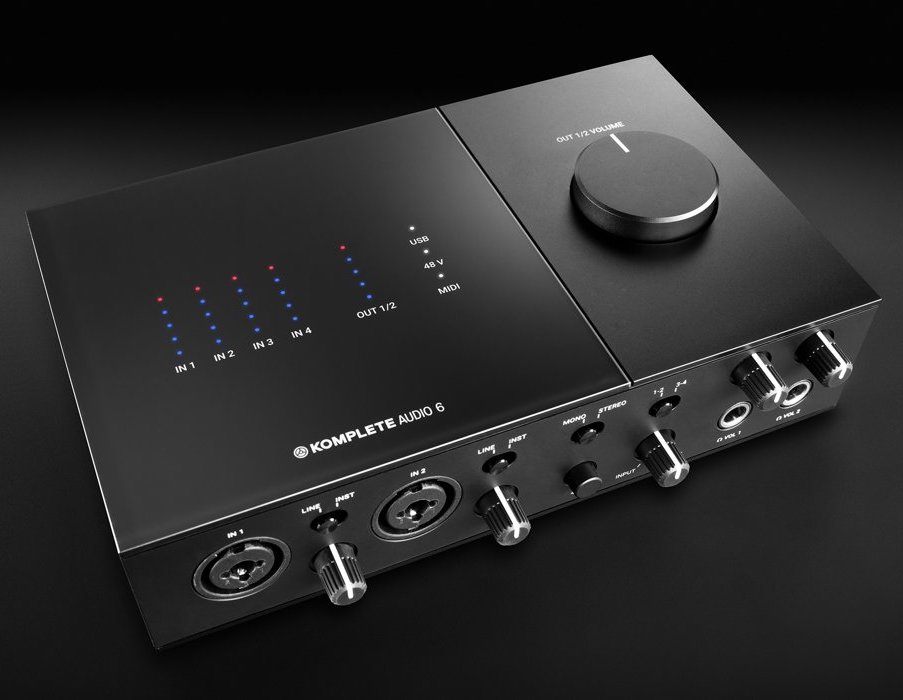
Berlin tech behemoth NI might be more closely associated with everything from soft synths to DJ controllers, but the brand’s interfaces are well worth a look. The Komplete Audio 6 MK2 is the successor to the original model, released way back in 2011.
Like most of the cheaper models on the market, it’s got fairly modest connectivity options – in this case four analogue inputs and four analogue outputs – but with a decent selection of added features, including MIDI interface, a large volume knob for monitor control, LED level meters on the top panel and S/PDIF digital connections for a further two channels in and out. Interestingly, the analogue outputs are specifically designed to double up as control voltage outs in addition to their more obvious audio output role. These control signals can be used to trigger analogue synths equipped with CV/gate inputs – a common feature of older hardware and the standard around which modular and semi-modular synths operate.
As a bonus, the Komplete Audio 6 is, for our money, one of the most stylish smaller interfaces on the market. That might sound frivolous, but even the biggest pro studio would admit that the creative environment has an impact on creativity. There’s no reason to be ashamed of picking an attractive option if it inspires your creative process, so long as the functionality backs up the looks. In the case of the Komplete Audio 6, that’s definitely true.
More info/Buy| Tech specs | |
|---|---|
| Analogue ins/outs | 4-in/4-out |
| Features | SP/DIF digital in/out; volume control |
| Dimensions | 56 x 200 x 136 mm |
| Weight | 850 g |
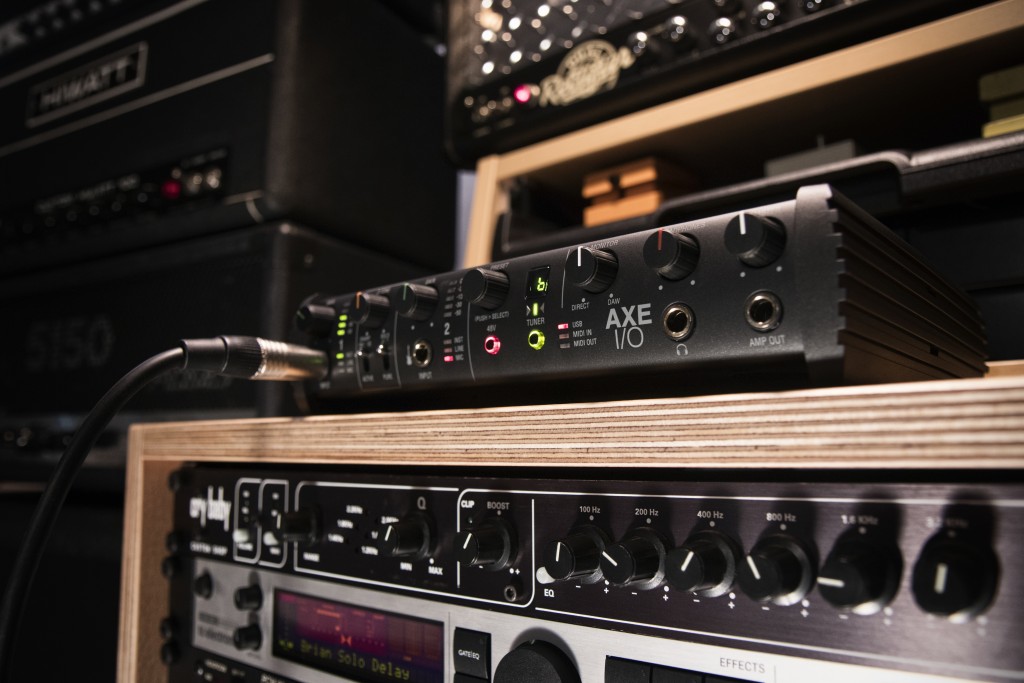
These days, most interfaces are perfectly capable of recording any sound source or instrument you throw at them. Even the most basic models will have options for recording instrument-level signals (like guitars) directly, microphone preamps (usually with phantom power for condenser mics) and line level sources like most synths, drum machines and effects. That being said, some interfaces do lean further toward particular uses. The IK Multimedia AXE is an interesting example, taking a leaf from the company’s own AmpliTube amp modelling software and focusing on recording guitars and basses.
At heart it’s a two-in, five-out interface, with one of those outputs being a unique dedicated guitar amp output. Other guitar-friendly features include expression pedal connections for the bundled AmpliTube 4 Deluxe software, valve-style JFET input mode for crunchier tones, and an onboard tuner. Clearly, the AXE I/O suits a very specific use case, but even if you only occasionally record guitars it’s a solid interface with a flexible, interesting approach.
More info/Buy| Tech specs | |
|---|---|
| Analogue ins/outs | 2-in/5-out |
| Features | Built-in tuner; MIDI in/out |
| Dimensions | 238 x 211 x 53 mm |
| Weight | 1.3 kg |
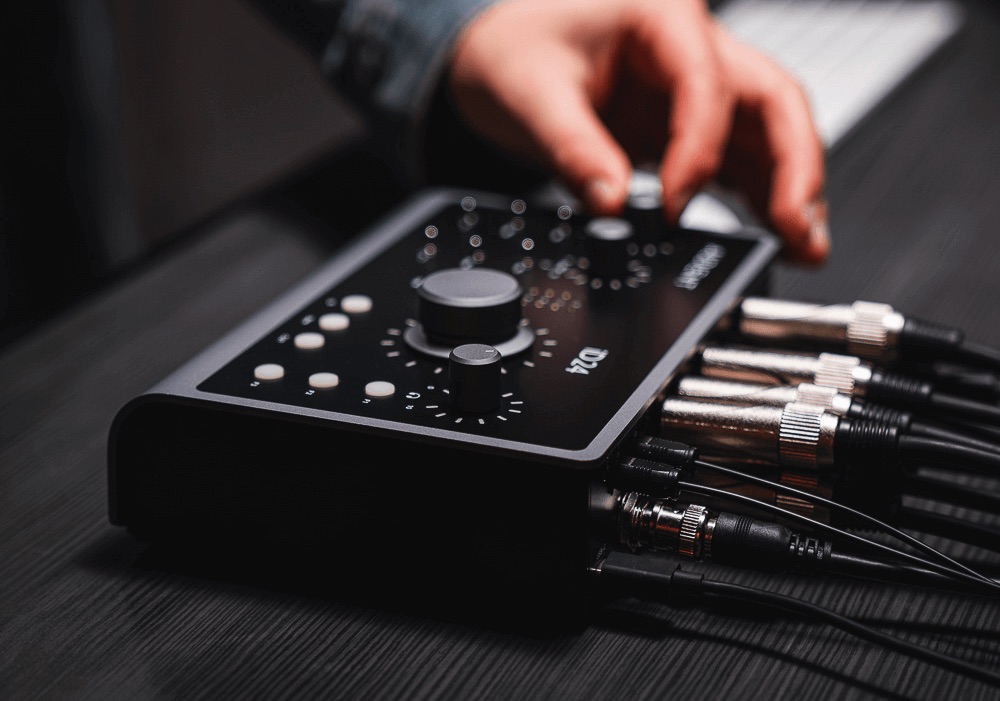
Not all interfaces follow the same design ethos. Even though they might all be trying to achieve roughly the same end results, the methods employed can vary significantly. Audient’s designers are definitely open-minded when it comes to experimentation, and the brand’s iD range demonstrates how effective that can be.
Out of the box, the iD24 is a two-in, six-out design with built-in monitor control options and insert points on both of the inputs. The latter is a fairly unusual feature in this price range, allowing you to set up outboard processing (a compressor or an EQ, for instance) between the preamp and the A/D converter, as would be common when recording vocals. You could also use it to plug a preamp directly into the A/D converter, bypassing the internal preamp altogether.
The ace up the iD24’s sleeve is that, when fully expanded, it’s capable of operating as a 10-in, 14-out interface. This is achieved via digital connections, which allow you to link up a multi-channel preamp such as Audient’s own ASP880 or cheaper equivalents from other brands. This expands the number of inputs drastically, which offers an appealing upgrade path for those who might not currently need a lot of inputs but plan to build a collection of hardware at some point in the future.
It’s not necessarily the obvious choice for everyone, but the iD24’s combination of superb sound quality, monitor control and expandability make it a winner for certain workflows. The brand’s slightly cheaper iD14 MK2 is also well worth considering, with a slightly more modest feature set but very much the same design ethos.
More info/Buy| Tech specs | |
|---|---|
| Analogue ins/outs | 2-in/4-out |
| Features | Monitor control; aux send/return; digital I/O |
| Dimensions | 227 x 181 x 88 mm |
| Weight | 2 kg |
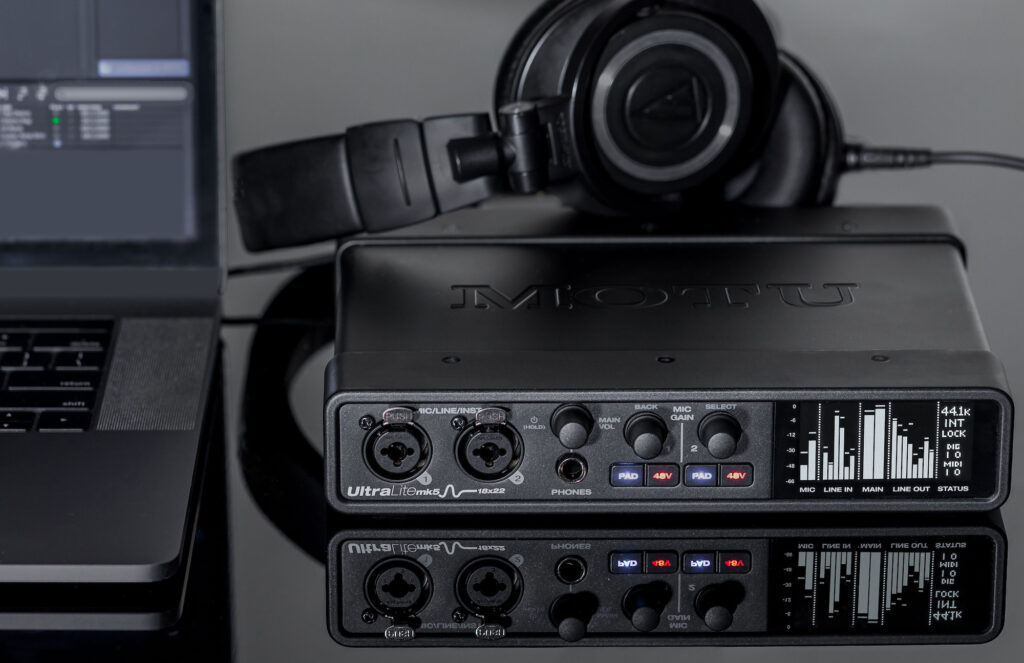
The UltraLite Mk5 is one of the most recent interfaces in a long-running range offered by MOTU (formerly known by the slightly more exotic name Mark of the Unicorn). The Massachusetts brand can stake a claim to being one of the longest-established interface brands in the world, having produced them for decades at this point and won countless awards over the years. As the name suggests, the fourth-generation version of the Ultralite has been refined and upgraded over time. It boasts an impressive eight analogue inputs and eight analogue outputs, up to a maximum of 18-in, 22-out when taking full advantage of all the digital options too.
At this kind of price point, you really can get an interface that could be considered a true all-rounder. The UltraLite offers MIDI connections, on-board DSP, decent level monitoring and options via the front panel LCD, plus the aforementioned digital connections for expansion. Other interfaces are more focused on particular things – the Arrow on effects, or the AudioFuse 8Pre on crystal clear analogue inputs – but the UltraLite is an incredibly versatile option for those who need a bit of everything. The small format makes it convenient for use in a live setup, too.
More info/Buy| Tech specs | |
|---|---|
| Analogue ins/outs | 8-in/10-out |
| Features | Digital I/O; DSP effects; MIDI I/O |
| Dimensions | 220 x 175 x 45 mm |
| Weight | 1.3 kg |
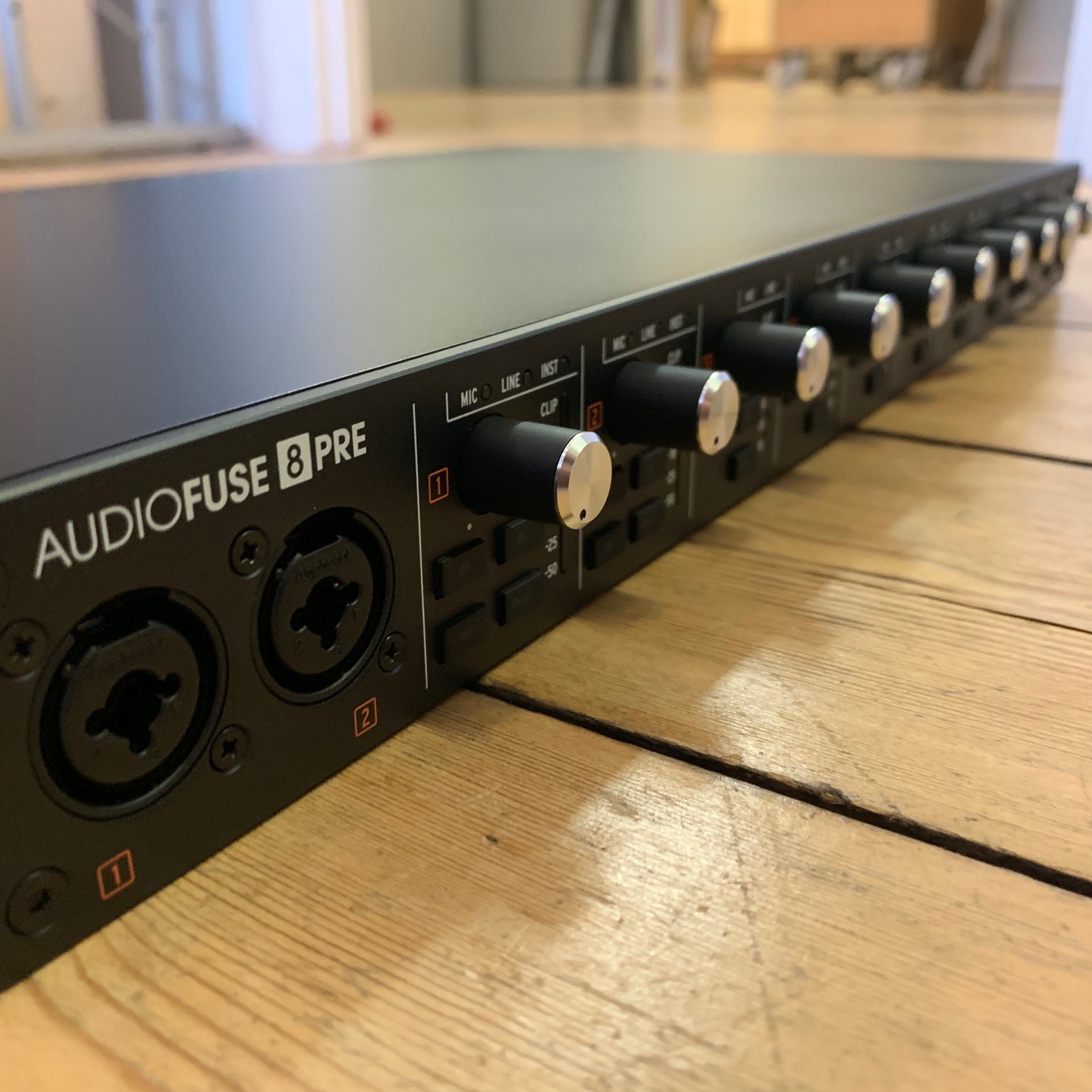
Arturia’s first audio interface, the original AudioFuse, was only released in 2017, but in the short time since then the French brand has established itself as a serious player in the market. The 8Pre is the rack-mounted design on our list; manufacturers tend to favour the simplicity of a desktop module format for cheaper modules these days, but you’ll find rack units more common as you move up to bigger and more powerful high-end interfaces. (The 8Pre’s rack ears can also be used as feet, but with potentially 20-plus wires trailing out of the back of the unit it would almost certainly be neater and easier to manage in a rack enclosure.)
As you’d expect, the 8Pre builds on the impressive sound quality of the original AudioFuse, focusing around eight analogue mic/line inputs (the first two of which can also be used for instrument-level signals like electric guitars and basses). All eight inputs use the same excellent Discrete Pro preamps found in the original AudioFuse, with switchable 48V phantom power per channel for use with condenser mics. The focus here is very much on recording, with no MIDI connections and no monitor controls.
What’s particularly clever about this model is the fact it works either as an interface in its own right or as an expander for other interfaces compatible with the ADAT digital standard. Over a single optical cable, the 8Pre can add a further eight analogue inputs to interfaces like the standard AudioFuse or many of the other ADAT-equipped options we’ve picked here (including the Audient, MOTU and RME models). In fact, given that the 8Pre also has an ADAT input, you could even link two of them together to create a monster 16-in, 20-out setup. As such, it’s a hugely versatile option for those who need lots of high-quality channels in and out.
More info/Buy| Tech specs | |
|---|---|
| Analogue ins/outs | 8-in/10-out |
| Features | Digital I/O; clock I/O |
| Dimensions | 440 x 260 x 45 mm |
| Weight | 5.1 kg |
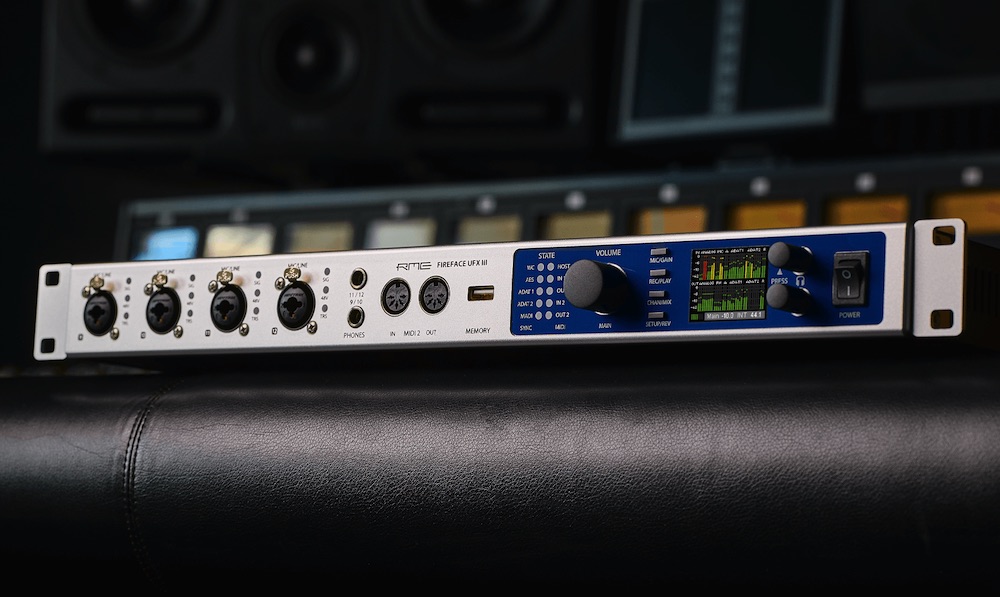
RME’s Fireface range is well established as one of the most respected options once you reach the rarefied upper echelons of the interface world. At this price point, you’d expect certain things as standard: a wealth of inputs and outputs, plus versatile connectivity across a range of digital and analogue formats. At the higher end of the market, sound quality really becomes the number one focus.
It goes without saying that anyone in the market to drop a four-figure sum on an interface is likely to be very serious about music. It also becomes harder to make blanket recommendations as individual workflows and use cases will differ quite substantially at this serious end of the market: some users might want nothing more than analogue inputs, some might need blistering DSP power, while others might need portability and versatility for live performance or location recording. The UFX III is very much an all-rounder, with a wealth of analogue and digital connections, DSP power and mix flexibility. It’s not cheap, but it’s seriously good.
More info/Buy| Tech specs | |
|---|---|
| Analogue ins/outs | 12-in/8-out |
| Features | Digital I/O; clock I/O |
| Dimensions | 483 x 44 x 210 mm |
| Weight | 3 kg |
In summary
Your choice of audio interface depends on a lot of very important questions, not least how many channels you need to record simultaneously. Our list covers options for every budget and every recording style, whether you want to multi-track a single instrument at a time, or record huge multi-track projects in a single hit.
Above all else, the most important aspect of any audio interface is its sound quality. There’s no doubt that sound quality increases as you move up to more expensive high-end interfaces, but even at the entry-level price points there are good quality options. What you tend to pay for are the extra features: monitor control, MIDI features, DSP effects and the like.